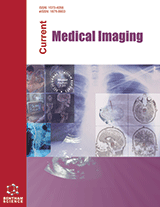
Abstract
Background: While cerebral cavernous malformations (CCMs) have been extensively described, few reports have described the imaging appearance of giant CCMs (GCCMs).
Objective: To describe the imaging characteristics of GCCMs and study the reasons for preoperative misdiagnosis.
Methods: We retrospectively analyzed the data of 12 patients (5 men, 7 women; mean age, 35.23 ± 12.64 years) with histopathologically confirmed GCCMs. Two radiologists analyzed the CT (n = 12) and MRI (n = 10) features: location, number, size, shape, boundary, signal intensity, and enhancement.
Results: The sellar region, cerebral hemisphere, skull bone, and ventricle were involved in 5, 4, 2, and 1 patients, respectively. Three tumors were irregularly shaped, while nine were oval. Eleven lesions showed slightly high- and/or high-density on CT; 1 lesion appeared as a low-density cyst. Calcifications were found in 11 lesions. Four tumors showed uniform hypointensity on T1-weighted imaging (T1WI) and hyperintense signals on T2-weighted imaging (T2WI). Six tumors showed mixed low-, equal-, and high-intensity signals on T1WI and T2WI. Noticeable contrast enhancement and gradual strengthening were noted on T1WI. Ten lesions showed hemorrhage and hemosiderin deposition. The GCCMs were wrongly diagnosed as cartilage-derived tumors/ meningioma (3 patients); tumor and hematoma (2 patients each); and pituitary tumor/ meningioma, chondroma, chordoma, ependymoma, and macroadenoma (1 patient each).
Conclusions: GCCMs present as an oval mass with slightly high- and/or high-density calcifications on CT and show hemorrhage and hemosiderin accumulation on MRI. Therefore, slightly high- and/or high-density calcification and hemosiderin accumulation are critical clinical characteristics of GCCMs.
Keywords: Cavernous hemangioma, Computed tomography, Magnetic resonance imaging, Misdiagnosis, Patients, Cerebral cavernous malformation (CCM).
Erratum In:
Imaging Features and Misdiagnosis of Giant Cerebral
Cavernous Malformations
 12
12












